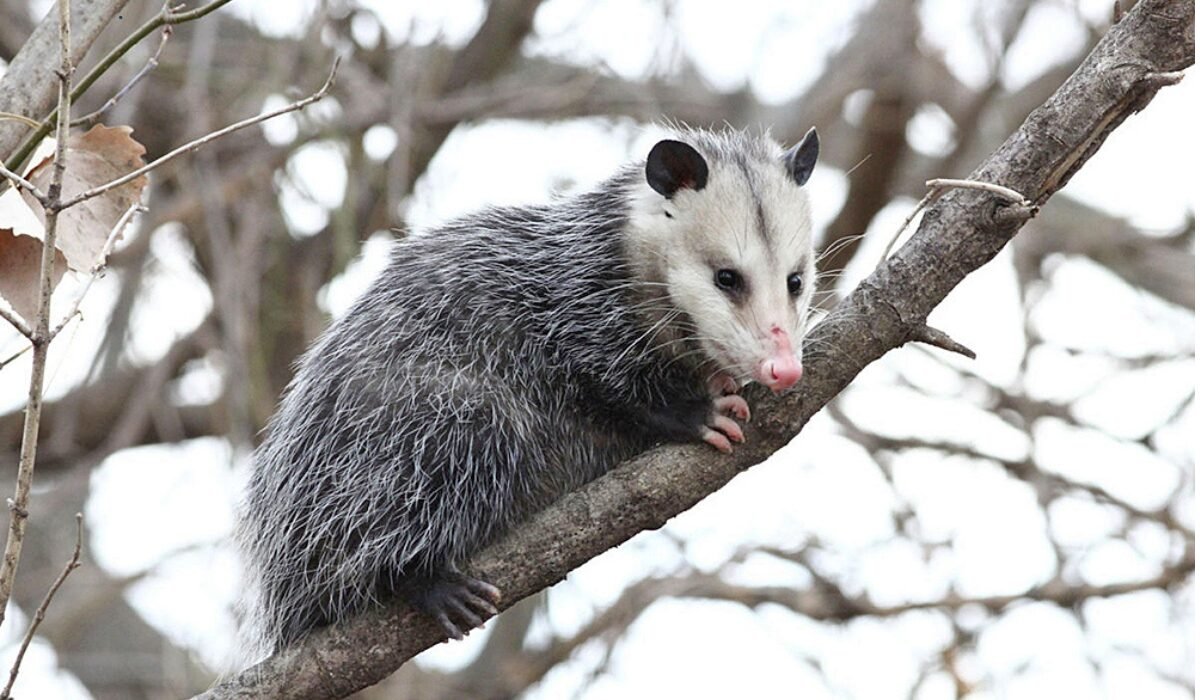Have you ever questioned approximately the mysterious nighttime creature referred to as the tñacuache? It is more usually diagnosed because the Virginia opossum, this charming animal, is a critical, albeit neglected, part of our surroundings. In Mexico, it’s called a “tñacuache” or “tlacuache,” it flourishes in diverse habitats, from lush rainforests to city backyards. This weblog put up targets to shed light on the myriad factors of the tñacuache’s life, exploring its behavior, dietary preferences, ecological position, and the demanding situations it faces. We’ll additionally debunk a few myths and provide insights into what makes this marsupial unique.
The Tñacuache’s Natural Habitat
The tñacuache is exceptionally adaptable, inhabiting a wide range of environments. This flexibility lets them stay comfortably in tropical rainforests, arid deserts, or even bustling suburban areas. While they are much more likely to establish themselves near water assets, their ability to adapt is one reason they’re so huge across the Americas. These habitats do more than offer refuge; they provide a rich food supply, satisfying these omnivorous creatures’ needs.
Despite their adaptability, tñacuaches face developing threats from human encroachment. Urban enlargement leads to habitat destruction, which challenges their survival. However, their resilience frequently allows them to discover new houses in backyards and gardens, in which they can keep their role as nature’s clean-up group.
Their habitat’s range is a testament to the tñacuache’s resourcefulness. This adaptability enables them to avoid predators and live securely in continuously changing environments because of human activity.
Nocturnal Lifestyles and Adaptations
Tñacuaches are nocturnal animals, which means they are most lively while the sun goes down. This lifestyle has brought about several remarkable variations, allowing them to thrive in the dark. Their large, round eyes offer brilliant nighttime imagination and precision, vital for navigating lit surroundings while looking for meals.
Apart from their keen eyesight, tñacuaches have an extraordinarily advanced sense of smell and hearing. These senses enable them to discover predators and discover food assets efficaciously. Their nocturnal nature also means they face fewer competitors in the wild, increasing their chances of locating sufficient sustenance.
Their unusual sleep schedule helps them avoid many of their natural predators, who are lively during the day. By venturing out at night, they lessen their threat of falling prey to larger, more risky animals.
A Diverse and Omnivorous Diet
Tñacuaches are proper omnivores, ingesting a wide variety of ingredients. Their eating regimen, by and large, consists of results, bugs, small animals, or even carrion. This numerous palette no longer best presents them with essential nutrients but also enables control of pest populations and smooths up natural waste.
In suburban regions, tñacuaches may be discovered rummaging through trash cans, attempting to find suitable scraps for eating. While this behavior may bother a few homeowners, it highlights their role in waste control and herbal pest management.
Their flexible food regimen plays a crucial function in maintaining environmental stability. By preying on insects and rodents, they help keep these populations in check, contributing to a more healthy environment for all.
Essential Contributors to Ecosystems
Though often disregarded, tñacuaches play a critical function in keeping their ecosystems balanced. They act as herbal pest controllers, preying on insects and rodents that could otherwise grow to be a nuisance. Additionally, by ingesting carrion, they assist in saving you from the unfolding of diseases and contribute to nutrient recycling.
These marsupials are also critical seed dispersers. By eating fruits and excreting the seeds somewhere else, they help increase the plant diversity in their habitats.
Their ecological contributions enlarge beyond their on-the-spot surroundings. By preserving pest populations in test, they, in a roundabout way, assist the fitness of other species, fostering an extra balanced and thriving atmosphere.
Identifying the Tñacuache
Recognizing a tñacuache is simple because of its different appearance. These animals have long, pointed snouts, sharp teeth, and a prehensile tail used for hiking. Their fur is generally grayish in coloration, with a white face and dark ears, lending them a unique and unmistakable appearance.
Tñacuaches are the most effective marsupials observed north of Mexico, which makes them precise among mammals inside the area. They are also regarded for their capability to play dead—a protective tactic known as “playing possum” that allows them to deter predators.
Understanding their bodily traits is critical for identifying them in the wild and appreciating the unique features that set them apart from other animals.
Friend or Foe? The Tñacuache’s Temperament
Tñacuaches usually are not aggressive animals and pose little risk to humans or pets. In truth, they’re regularly more fearful of human beings than we are of them. When threatened, they opt to flee or play dead in preference to interacting in a war of words.
Their timid nature makes them unlikely to motive harm except when provoked. Even while cornered, they usually engage in shielding behaviors like hissing, growling, or generating a nasty-smelling liquid to discourage predators.
Understanding their conduct can assist dispel myths and foster coexistence with these mild creatures, allowing us to comprehend their position inside the ecosystem.
The Challenges Faced through Tñacuaches
Despite their excellent adaptability, tñacuaches face several threats from predators in the wild. Some of their primary predators are owls, foxes, and big snakes. Additionally, human-associated factors such as habitat destruction, roadkill, and pollution pose enormous dangers to their survival.
Their natural camouflage and nocturnal conduct provide some safety, but these measures must be more foolproof. Human sports continue to encroach on their habitats and increase the dangers they face each day.
Awareness of these demanding situations can encourage groups to implement measures that guard and maintain tñacuache populations, ensuring their continued contribution to neighborhood ecosystems.
Reproduction and Lifespan
Tñacuaches have an exceedingly quick lifespan inside the wild, typically dwelling for about 2-4 years. However, they compensate for this quick life by reproducing in large numbers. Female tñacuaches can give birth to as many as 20 young in a single muddle, though no longer all will continue to exist until adulthood.
Their reproductive method ensures the continuation of their species despite the severe threats they face. The young are born tiny and undeveloped, residing in their mom’s pouch until they are strong enough to venture independently.
Understanding their reproductive behavior highlights their resilience and survival ability, even in challenging environments.
Tñacuaches as Unlikely Pets
Though tñacuaches can also look like an exciting choice for a puppy, several essential factors must be considered. Caring for a tñacuache requires a precise understanding of its food regimen, habitat needs, and conduct. Additionally, they are wild animals and won’t adapt well to domestic life.
In many locations, keeping a tñacuache as a puppy is unlawful without a unique permit. It’s essential to analyze the legal guidelines for your place before attempting to cultivate one.
Ultimately, the best way to comprehend tñacuaches is by observing them in their herbal habitat, where they can thrive and contribute to the atmosphere.
Conservation and Protection Efforts
Regardless of their flexibility, tñacuaches face creating dangers from human exercises, including living space obliteration, roadkill, and contaminations. Conservation efforts targeted at retaining natural habitats and decreasing human-related dangers are vital for their persevered survival.
Community involvement in conservation initiatives, wildlife corridors, and public schooling applications can significantly protect these essential creatures. By focusing on their ecological price, we can foster a more harmonious relationship with the tñacuache.
Supporting conservation efforts guarantees that future generations will continue to benefit from the ecological services supplied by tñacuaches.
Conclusion
The tñacuache can be small and often neglected, but its contributions to nature are beneficial. From pest management to seed dispersal, these nocturnal marsupials are vital in maintaining ecological stability. By know-how and appreciating their behaviors, habitats, and challenges, we will work together to ensure their survival.
If you want to learn more about tñacuaches and how to assist their conservation, consider visiting nearby natural world agencies or participating in citizen technology initiatives. Together, we will help maintain the sensitive net of life that sustains us all.

